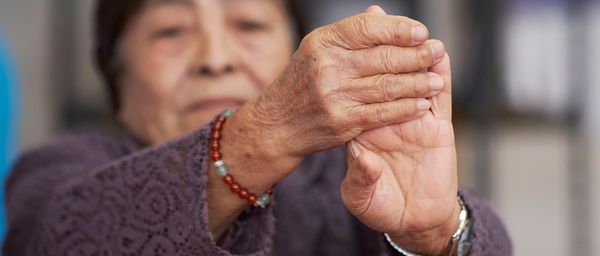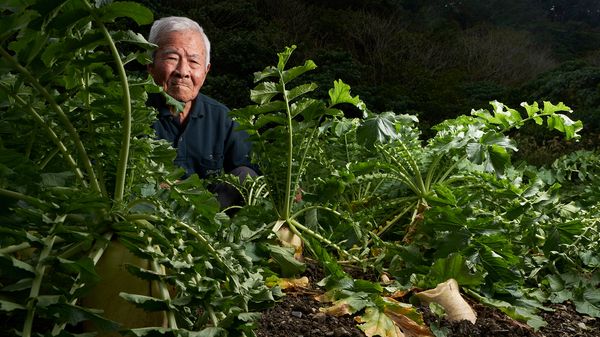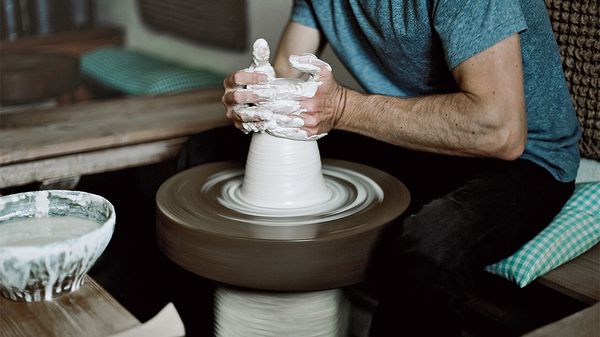A woman, a mountain, a wooden house, a simple life: in her house there is a living room, which also serves as the bedroom. Her bed is a simple mattress on a frame with coil springs. Mizako Miyagi’s kitchen consists of a gas oven, a gas bottle and two hobs. There is also a sink and some kitchen utensils, but naturally no food processors or mixers – why would she need them? ‘I can still do everything easily by hand, including the cooking,’ she says. Then the neighbour Chosei Hentona is asked a question about his neighbour: ‘Which attribute immediately springs to mind when you think of Miyagi-san?’ He answers without even having to think twice: ‘She is the happy woman with the strength of three hearts.’

Nowhere in the world are people as contentedly old as in Ogimi on Okinawa. A visit to Mrs Mizako Miyagi and the question: ‘What tasty and healthy meal are you making today, Miyagi-san?’
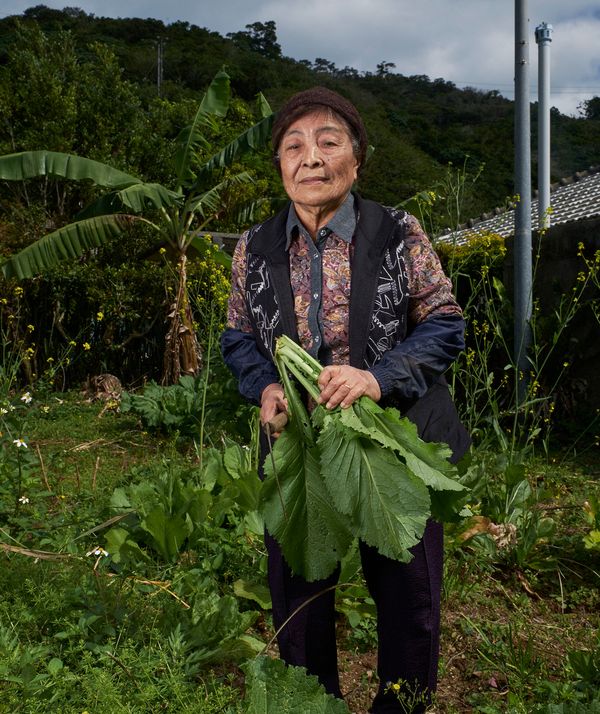
The village of centenarians
Mizako Miyagi is 90 years old. Her house is located on the outskirts of Ogimi, a community of 3,200 residents in the north-east of the southern Japanese archipelago of Okinawa. Of the 1.5 million people who live on Okinawa, around 900 are one hundred years old or even older, plus a striking number of people like Miyagi-san who are nearly one hundred years old.
Her house is ten kilometres from the village. Ogimi is one of the five so-called Blue Zones on the planet. At the entrance to the village is a stone that bears the inscription: ‘Number one for longevity’. Besides the residents of Ogimi, there are people on the island of Sardinia, on the Nicoya Peninsula in Costa Rica, in Ikaria in Greece and among the Seventh-Day Adventists in Loa Linda in California who live especially long and healthy lives.
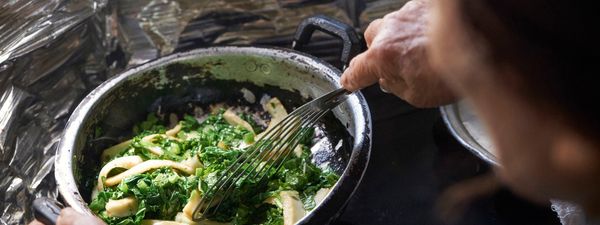
The secret of longevity
What do these places all have in common? The people eat a very healthy diet, they stick together, they are active and they take things slowly. Miyagi-san says: ‘On Okinawa, we take a great deal of time over everything, including cooking.’ In most places of the world the food is often very high in calories, but low in nutrients – there is a lack of fibre, magnesium, potassium and vitamins. People consume large quantities of saturated fats, trans fats, sugar and salt, resulting in poor blood levels and thus diseases. In Ogimi, meanwhile, the residents’ blood values are better than average. They also have healthy hearts and a low susceptibility to developing cancer.
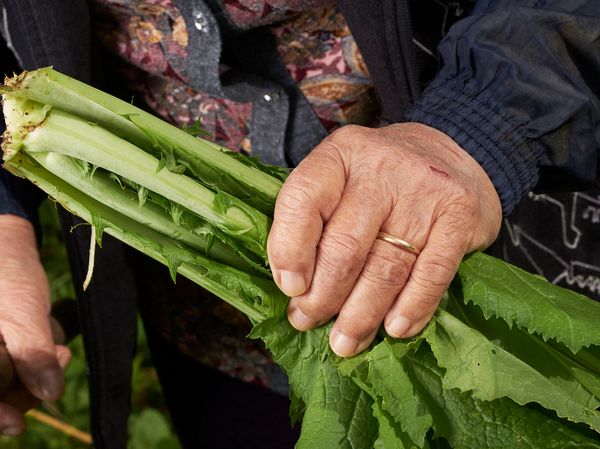
The garden provides the best nutrients
On Miyagi-san’s menu today: champuru with karashina, a kind of spinach that grows in her garden. Champuru is a national dish on Okinawa, a stir-fried dish mainly made using vegetables and a number of other ingredients, including tofu, pork, loofah (sponge cucumber) and goya (bitter gourd). Champuru roughly translates as ‘something mixed or combined.’
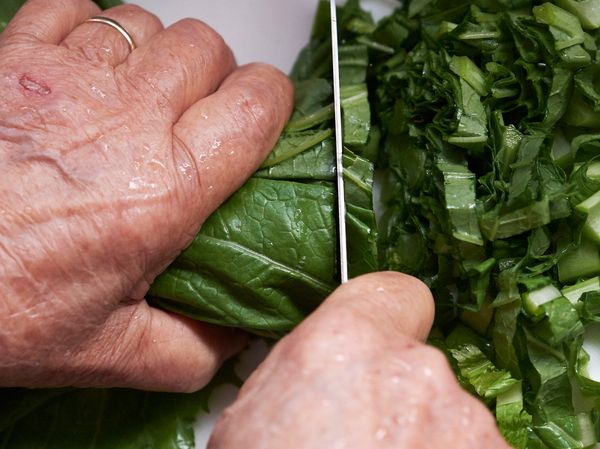
Take good care of body and mind
Miyagi-san eats champuru three times a week – just like today. From the radio in the living room, the delicate, soothing sounds of the Japanese shamisen, a three-stringed lute with a small body, drift into the kitchen. How old is the radio? Maybe 60 years old, she cannot remember exactly, it was a gift from her grandmother. Even older than the radio, however, are her teeth, says Miyagi-san. More than 20 of them are still the originals. ‘Well looked after,’ the mayor recently told her as he presented her with a medal for the achievement at a prize-giving ceremony at Ogimi Community Centre. This is how Okinawa Prefecture motivates elderly people to look after themselves and stay healthy.
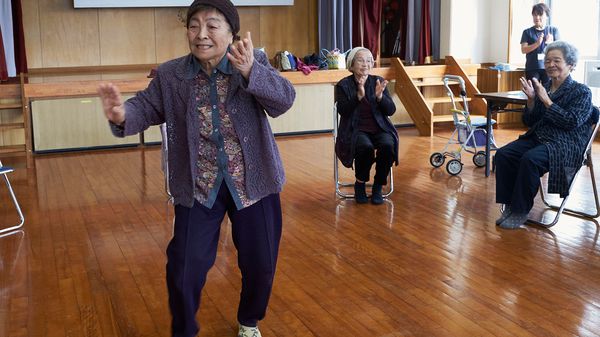
Togetherness is an elixir of life
Just like many of the elderly people with whom she meets up in the culture centre every Thursday for ladies’ day, Miyagi-san is also not familiar with the word ‘retirement’. It does not exist in the vocabulary of Okinawa’s old languages. The people here remain active into old age. That is why Miyagi-san’s day begins at seven o’clock each morning. After waking up, she switches on her grandmother’s radio, listens to some music and drinks tea.
Stay physically active
Then it is time for the housework and gardening. Sometimes she goes to the organic market in Ogimi, unless she heeds the call of the mountains behind her house. She frequently wanders through the trees and bushes and gathers anything that nature is prepared to offer, including wild vegetables, mushrooms and berries. She sometimes even walks as far as the coast ten kilometres away and gathers mussels and algae. Besides a healthy diet, physical activity is one of the important pillars on which the longevity of the Japanese island inhabitants is based.
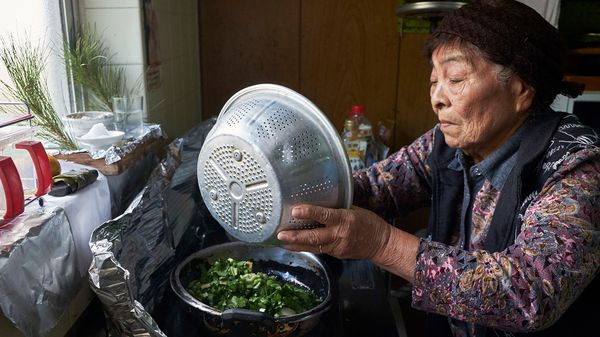
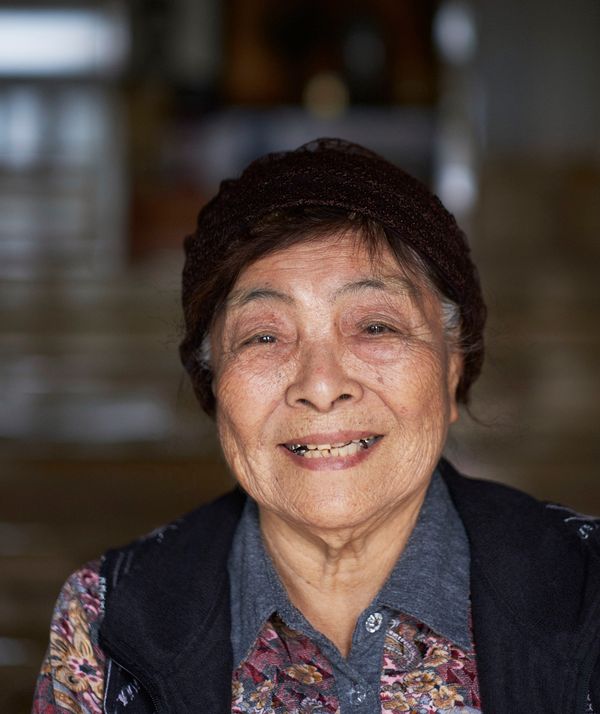
Learn to accept the dark days as well
Mrs Miyagi places the wok on the gas hob and adds a little soya oil before talking about her life. She has four children. Her husband died in 1967; she was 37 at the time. From then on, she worked for an insurance company so that she could bring up her four children alone – two sons and two daughters. Mizako doesn’t want her grandchildren, nine in total, to experience what she had to endure: 75 years ago, the biggest Pacific battle of the Second World War claimed more than 150,000 lives in Okinawa. Mizako was 15 years old when Japan capitulated. The atomic bombs had just been dropped on Hiroshima and Nagasaki.
She also survived another situation not so long ago. It was in May 2016; Mizako was 86 years old. It was dark and the mountain was silent. She was unable to sleep because the moon was shining brightly. Miyagi-san went outside into the garden. Suddenly, she felt something soft beneath the sole of her summer slippers and snatched up her right foot. But it was too late –a snake had bitten her ankle. It must be jinxed, says Miyagi-san, but every year since then she has fallen ill in May. She recently had to fight off pneumonia. ‘Anyone who has experienced and survived all of that is happy for the rest of their life,’ says Miyagi-san with a smile.
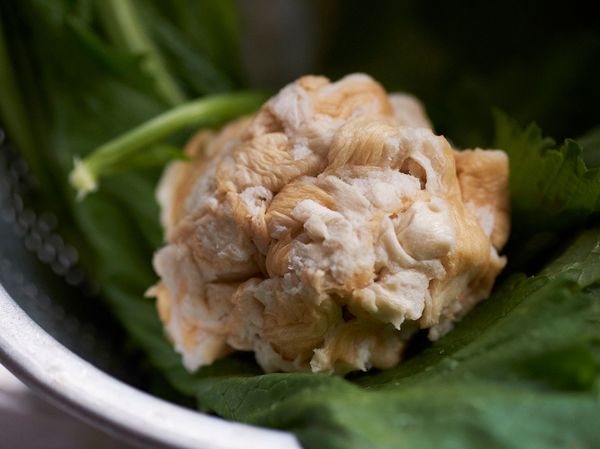
Simple and healthy: fu with fishcake and vegetables
The oil in the wok is hot. In the meantime, she has mixed fu with three eggs in a bowl to create a dough-like mass. Fu is a Japanese variation of seitan. Before being used, it is soaked in hot water and then squeezed out. Like a sponge, it absorbs liquid during preparation and increases in volume. She adds the fu and egg mixture to the hot wok and briefly fries it.
At the same time, she chops the washed vegetables and adds the sliced fishcake. In its simplest form, fishcake is made out of fish, eggs, flour, salt and water. She removes the fu from the wok and places it on a flat plate. Then the vegetables and fishcake are added to the hot pan, along with a little bonito powder, a kind of instant fish stock. Finally, she dishes up the fried vegetables on the plate with the fu. It is a quick and easy meal that is high in protein and carbohydrate, but low in fat.
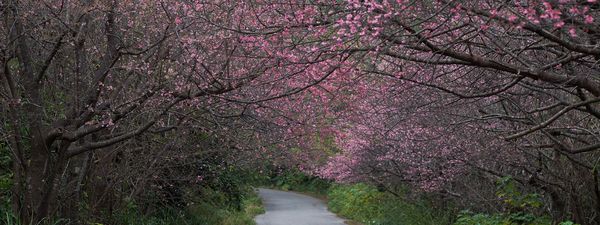
Regard life as a gift
One last question before it is time to eat, during which the Japanese often remain silent: ‘Miyagi-san, thank you for the invitation. How are you today?’ The woman with the strength of three hearts replies with not just one ‘Happy’. She is ‘Happy, happy, happy.’ And you get a sense of how just how much she regards her life as a gift.
